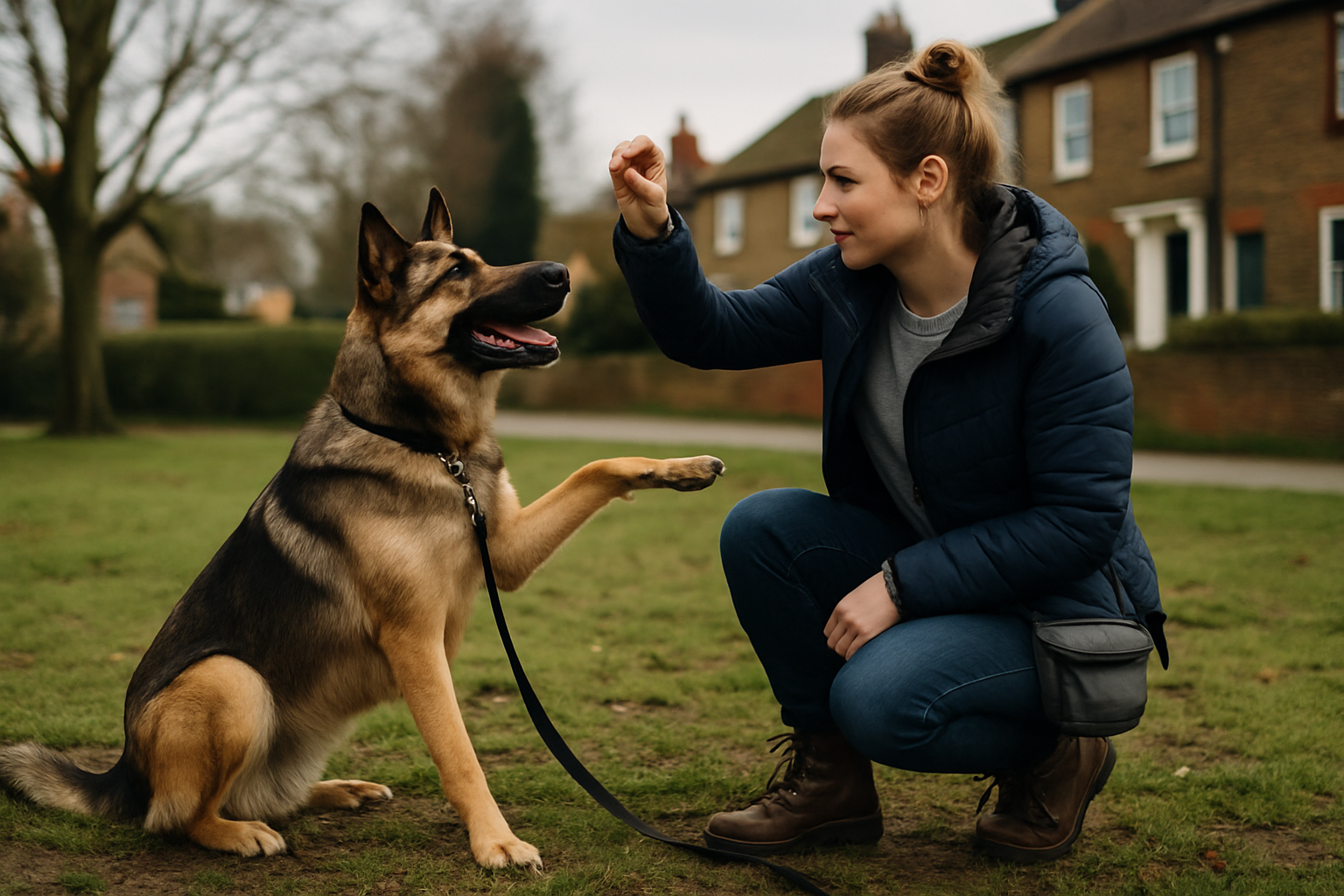Feeling Stuck? Start Here
Reactive Dog Training can feel overwhelming when your morning walk turns into a bark-fest. At PawsGuide, we know how disheartening it is when your lovely companion seems to switch from calm to on edge in a heartbeat. The good news is that reactivity is a skill we can reshape with patience, kind methods and a bit of planning. This post brings you simple steps for British life, from rainy pavements to busy parks, so you can start seeing steadier, happier outings. You are not alone, and change can start today.
What Reactivity Looks Like
Reactivity is a big feeling in a small moment. You might notice barking, lunging, spinning on the lead, freezing or trying to hide. These are normal ways dogs say they are not coping. Often the trigger is another dog, a jogger, bikes or even a sudden rustle of a bin bag. Your dog is not being naughty. They are signalling stress, fear or frustration, and they need guidance that feels safe. A good Reactive Dog Training plan starts by noticing your dog’s threshold – the distance at which they can still think and take a treat. If they cannot eat, look away or breathe steadily, you are too close. Step back, allow time to settle, then try again at a safer distance.
Start With Safety and Space
Pick comfortable kit. A well-fitted Y-shaped harness and a 2 m lead give support and help prevent neck strain. Keep tasty, pea-sized treats in a pouch so you can reward calm choices. Scout quiet routes and times, and be ready to add space with a smooth U-turn or a step off the path. During Reactive Dog Training, go for calm wins over heroics, and keep sessions short. Reactive Dog Training is not about getting on with it or forcing your dog to face their worries. If a surprise trigger appears, toss a small scatter of treats on the ground, say let’s go in a cheery voice, and leave with dignity. That reset protects learning and confidence.
Calm Foundations At Home
Think of calm as a skill you can top up daily. Teach a cosy settle on a mat, rewarding glances to you and soft breaths. Try nosework games, like finding treats in a towel roll or a cardboard box, to release feel-good sniffing. Licking and chewing on a stuffed toy can also lower arousal. Use a simple Reactive Dog Training routine at home: three minutes of mat practice, three minutes of scent games, then a rest with a chew. Keep arousal low, end while it is still going well, and keep notes. Little and often beats marathons.
Smarter Walks, Not Longer Ones
Plan routes that avoid bottlenecks. Give your dog time to sniff, since brains calm when noses are busy. Introduce a This Way cue for graceful U-turns, plus a Watch Me cue so you can gently guide their eyes back to you. Try the Look At That game: when your dog notices a trigger, say yes the moment they glance, then pay a treat as they turn back to you. Start at a distance where they stay loose, even if that means the other dog is tiny far away. Track your Reactive Dog Training progress with tiny goals, such as one quiet look at a moving dog from 30 metres, then 25 metres next week. Those wins stack up 🐾.
When To Get Help
Pain and health changes can fuel reactivity, so a vet check is a sensible first step. If progress stalls, a qualified trainer can tailor Reactive Dog Training to your dog’s triggers and your local area. In the UK, look for practitioners listed with the ABTC or APDT, and choose reward-based support only. If safety is a worry, teach a basket muzzle with treats and games so it feels like a picnic, not a punishment. You deserve walks that feel safe and hopeful, and your dog deserves clarity and kindness.
If you need extra support or additional resources, visit our ‘Useful Links‘ page for further guidance.

